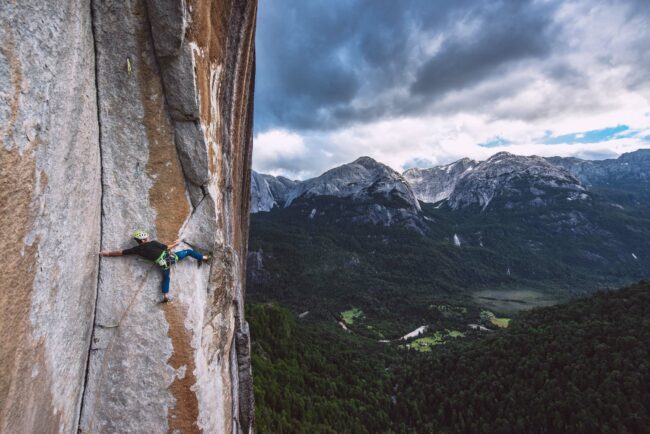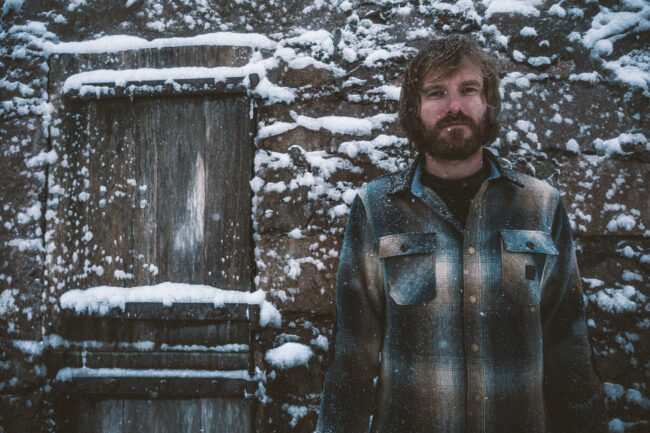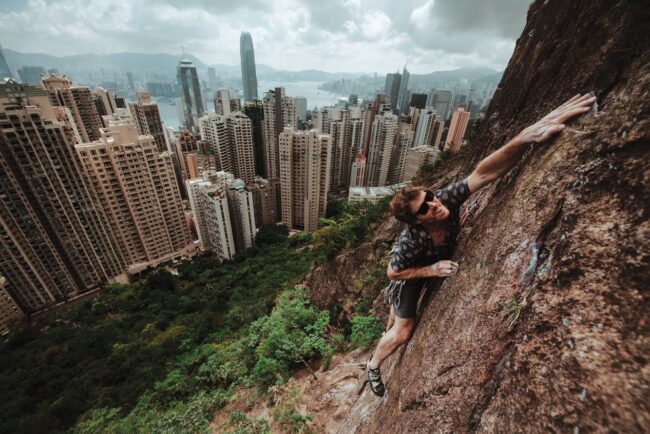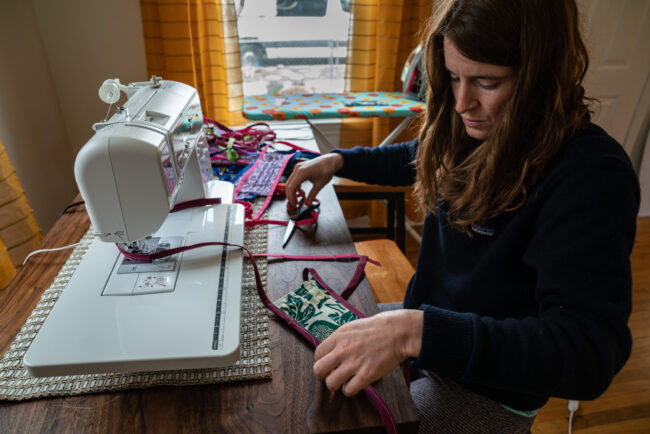




 Drew Smith photographed by Dylan Gordon
Drew Smith photographed by Dylan Gordon
Photograph by Dylan Gordon
Drew Smith
Over the years, Patagonia has given me the opportunity to continue to live my life and simply document it along the way. They value authenticity and encourage photographers to capture those real moments, so if anything, working with Patagonia has encouraged me to hold on to what feels honest and true to myself. I’ve also built a lot of confidence working with the editors who I’ve built relationships with. Those relationships have provided a path where I constantly grow as a photographer due to genuine conversations and feedback about my work.
How have you been navigating life interrupted this year?
Usually, I travel internationally for expeditions and shoots throughout the year, but this year I’ve shifted to keeping things closer to home. I’ve been spending more time shooting product and doing more commercial photography: taking advantage of this time to invest in different realms of this art form. In a lot of ways, shooting on expeditions is easy for me – it’s what I’m comfortable with and the inspiration comes easily. I know this time, strengthening other skills, will only help me to become more well-rounded and a better photographer overall. I’ve also been spending more time exploring closer to home. I’ve spent the past year around Montana, Wyoming, and Utah, going to places off the beaten path in my own backyard. It amazes me how fast humans adapt and how the new norm can shift with the blink of an eye.
Covid left us all wanting to help those in need, how did that manifest for you?
When Covid first hit, I felt a mix of depression and helplessness with a conviction to do something. People were getting laid off left and right. Families and businesses were suffering and still are. In many ways, I was largely unaffected and covid enlightened the disparity of people’s experiences living in the same country. Right away there was a high demand for masks for people in the healthcare industry. I felt that making masks was one small thing I could do to help. My girlfriend and I learned how to sew and made masks from scrap fabric I had at the house. We donated the masks through a program where they got distributed to local organizations in need. It wasn’t much, but I could see how the cumulative effect of small actions could be a powerful force for support and change.
Rhiannon Klee sewing mask. Salt Lake City. Lock Down.
This year has been pretty awful, share some stoke about your close to home adventures.
I spent most of the summer in my home state of Montana exploring new areas with my girlfriend. We did a ton of adventure climbing, where no other climbers were venturing, and enjoyed the solitude. We also spent time finding hot springs and waterfalls on rest days. It was a meaningful experience to reconnect with the place I grew up in.
You’ve been on the road for 15 years, 3 best lessons from that experience?
1. The most valuable part of being on the road is getting to interact with a wide range of people because it’s an opportunity to have a better understanding of those that differ from you. My experience on the road has not been limited to climbing trips. I’ve worked in construction, wilderness therapy, search and rescue (just to name a few). I’m grateful for all I’ve absorbed from those different experiences. You carry that stuff with you and it becomes a part of who you are.
2. In a weird way, not having security has made me feel secure. being less rooted, I’m more comfortable not having a plan and more comfortable with change.
3. In our world of consumerism, people are constantly buying stuff. Being on the road, you really can’t have much and so you realize that you don’t need much. For years I only owned what I could fit in my vehicle and it’s been a good reminder throughout my life.
I know you’re committed to creating meaningful and honest images, what’s the key ingredient?
Connecting with authenticity. Finding those moments that feel real, when people are being themselves. When people are comfortable and doing what they love, that’s when you’ll catch genuine moments. I also think the more genuine and honest I am as the photographer, the more people give back that same level of authenticity: real gets real.
You’re living life fully and your parents support you with the power of love, how do you balance risk and love?
I factor the people that I love into my decision making when it comes to risk. In all of my years of climbing, I’ve developed an understanding of my abilities and I try to approach risk that is in line with my skill level. I think my parents have taught me a lot about the relationship between love and risk. They not only support me out of love, but they support me because they want me to be who I am, which to me is the greatest form of love.
You were recently featured in Firestone Walker, how did that inform your creative process after that project? You were in front of the lens this time.
I think being behind the lens, as well and in front of it, is an important part of any creative process. After seeing what was captured and chosen with the angels and compositions, it made me even more aware of the differences in perspectives. How I see myself might be different than how others see me since they are bringing their own narratives into it. It’s more collaborative than you might realize. My family said the film captured who I was and that made me proud because that’s how I want people to see me, (in a genuine way)
Tell us about Kyrgyzstan.
Last winter, two friends and I traveled around Tajikistan and Kyrgyzstan. We drove 3,000 miles around remote areas in search of new ice lines. It was a personal trip with no professional agenda and it connected me to the origin of why I started taking photos in the first place. I felt fully immersed in the experience without pressure and found myself wanting to capture it all: from the people we met, to the broke down van that barely got us around, and of course the remote ice lines. I was taking photos constantly. It was a good reminder that you don’t need a big mountain or a solid plan to have a good adventure.

